Named after ?Lord Dhanwantari?, the deity of Ayurveda, this rich, gold-tinted oil is a versatile combination of herbal drugs in a nourishing base of sesame oil. Abhyanga or ?oil massage? is an important part of the Dinacharya (Daily routine) prescribed by Ayurvedic literature. Scriptures suggest the use of suitable oils massaged in the direction of hair growth and around joints, to pacify aggravated doshas and maintain balance.
Dhanwantaram taila is an essential part of the prenatal and post-natal regimen. Massage during pregnancy with the taila helps to strengthen the muscles and makes them strong enough to hold the fetus, which later helps in facilitating childbirth.
Benefits of Sitaram Ayurveda Dhanwantharam Thailam:
This popular taila is the perfect choice for the body ravaged by vata-kapha elements in combination, showing signs and symptoms like overall dryness, aches and pain, and loss of mobility.
Kashaya of Dasamoola and Bala (Sida cordifolia), prime anti-inflammatory drugs, are used in intensifying the taila.
Dhanwantaram taila is indicated in pathologies of Vata-Kapha origin characterised by improper functioning of the Central and Peripheral Nervous sytem.
It is extensively used in supporting the treatment of neurological disorders like neuritis, neuralgia, paralysis, facial palsy etc.; chronic rheumatic conditions like osteoarthritis, cervical spondylitis, spondylosis, sciatica etc
A gentle and soothing massage during pregnancy with Dhanwantharam Thailam provides relief from problems like skin dryness, itchiness, pain, and tiredness. It also promotes easy labour.
Dosage of Sitaram Ayurveda Dhanwantharam Thailam:
Quantity sufficient for whole-body application or localised application. Massage in the oil for at least 15-20 minutes followed by sudation or a warm water bath for best results. Pregnant women with co-morbidities and individuals with known diseases should seek professional advice before adopting a taila for abhyanga.
Suitable for all ages.
Specifically indicated for expecting and newly-delivered mothers.
Ingredients of Sitaram Ayurveda Dhanwantharam Thailam:
Bala (Sida cordifolia)
The Ayurvedic system of medicine considers Bala or Sida cordifolia as a tonic, astringent, emollient, and aphrodisiac. The drug also forms a chief ingredient of several important formulations and preparations in Ayurveda. Internally, bala is believed to be a very effective nervine tonic and rasayana for all kinds of vata disorders.
Yava (Hordeum vulgare Linn.)
Commonly known as barley, it belongs to family Poaceae. Yava is a famous shukadhanya (cereal) used in Indian systems of medicines viz., Ayurveda and used in different medicinal preparations as well as in dietary form for many santarpanajanya roga like prameha(diabetes), kustha (leprosy) and medoroga (obesity) etc.
Kulatha ( Dolichos biflora)
Kulatha is one such dietary article having multiplicity in use from time immemorial. It can be utilised in different therapeutic conditions as food and also as medicine. They are good sources of proteins.t has been included under the Pathyas of many diseases such as Prameham, Amavatam, Swasam etc
Devdaru (Cedrus deodara)
Cedrus deodara or Himalayan Cedar is very effective in neurological disorders, asthma, pruritis, infested wound. Devadaru is also effective in arthritis and headache.
Chandana (Sanctalum album)
The addition of sandalwood or chandan nourishes the skin by reducing pimples, acne marks, blemishes, suntan, dullness and excess oil from the skin. This potent herb pacifies Pitta doshas, cleanses the skin, reduces inflammation and effectively treats conditions like diarrhoea and piles.
Sariva (Hemidesmus indicus)
Known for its refreshing coolant action, blood purifying effect & pitta pacifying properties. Sariva detoxifies the aama (toxins). Hence it is very useful in gout, arthritis, chronic rheumatic disorder and glandular swellings and Beneficial in burning micturition and yellowish urine.
Kushta (Sausseria lappa)
Kushta is a widely used drug in Ayurveda that has a good anti-inflammatory and anti-bacterial property. It also helps in preventing infections.
Thagara (Valeriana wallichii)
Calms the mind by interfering with brain chemicals (GABA) that communicate information between the nerve cells in the brain. Induces good sleep and reduced stress.
Vacha (Acorus calamus Linn.)
It is a traditional Indian medicinal herb, which is practised to treat a wide range of health ailments, including neurological, gastrointestinal, respiratory, metabolic, kidney, and liver disorders. The root (rhizome) is used to make medicine. Despite safety concerns, calamus is used for gastrointestinal (GI) problems including ulcers, inflammation of the stomach lining (gastritis), intestinal gas (flatulence), upset stomach and loss of appetite (anorexia).
Punarnava (Boerrhavia diffusa)
A potent ayurvedic has immense health benefits and has been in use since ancient times in treating a host of health anomalies. Commonly known as Hogweed, Sterling, Tarvine in English, Mukarati Kirei in Tamil, Raktakunda, and Shothaghni in Sanskrit, it is popularly used in folklore medicine too. Punarnava has powerful analgesic and anti-inflammatory properties, which is extremely beneficial in reducing joint and muscle pain, thereby reducing the chances of chronic autoimmune inflammatory diseases like rheumatoid arthritis.
Aswagandha (Withania somnifera)
Ashwagandha is commonly used for stress management. It is a powerful ?adaptogen? and found effective in modulating brain function. Ashwagandha contains chemicals that might help calm the brain, reduce swelling (inflammation), lower blood pressure, and alter the immune system.
Yashtimadhu (Indian liquorice)
These roots obtained from the Glycyrrhiza glabra tree help in pacifying the Pitta doshas like piles, anemia, and controls the vata doshas like urinary incontinence, urinary retention, improve wound healing and reduces inflammation.
Hareetaki (Terminalia chebula)
Popularly known as Indian walnut for its innumerable benefits or Indian hog plum in English, it is extremely valuable for its role in improving hair health. It is useful for treating scalp infections like dandruff, itching and hair fall. It also strengthens them from the roots, prevents breakage and loss of hair and bestows silky soft, smooth hair
Amalaki (Emblica officinalis)
Commonly known as the Indian gooseberry is high in vitamin C and natural antioxidants known as flavonoids and polyphenols. When used for hair treatments, it is found to strengthen and condition follicles down to the roots. Amla oil can promote hair growth, reduce dandruff, and prevent the greying of hair.
Vibhithaki (Terminalia bellerica)
Known as beach almonds or Bedda nut tree It is rich in Vitamin C, and other antioxidants that nourishes the hair roots. Bibhitaki helps in making the roots of the hair stronger, minimising hair fall and preventing premature greying of hair strands.
Bilva (Bael)
The anti-bacterial properties of bael pacify Vata and Kapha doshas and cures and prevent many skin infections.
Agnimantha (Premna integrifolia)
The extracts of Agnimantha play a vital role in improving skin glow and texture. It prevents dark circles, blemishes, breakouts, scars left after the healing of acne, suntans, and various signs of ageing and provides a natural radiance to the skin.

 Shop
Shop Beauty Care
Beauty Care Grocery & Gourment Foods
Grocery & Gourment Foods Baby Care
Baby Care Pet Products
Pet Products +91 9790 666 400
+91 9790 666 400 Home
Home Login
Login Cart (
Cart ( 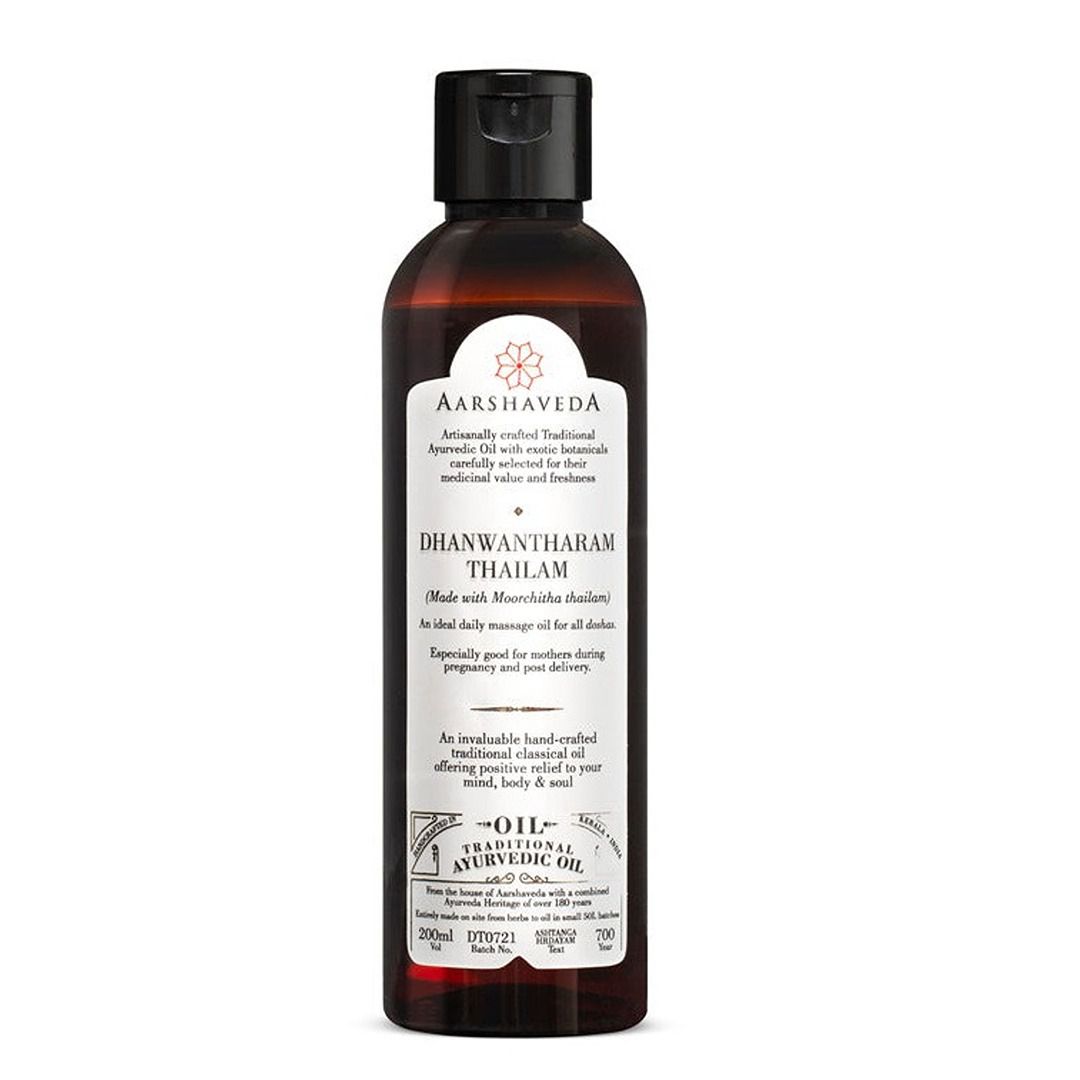
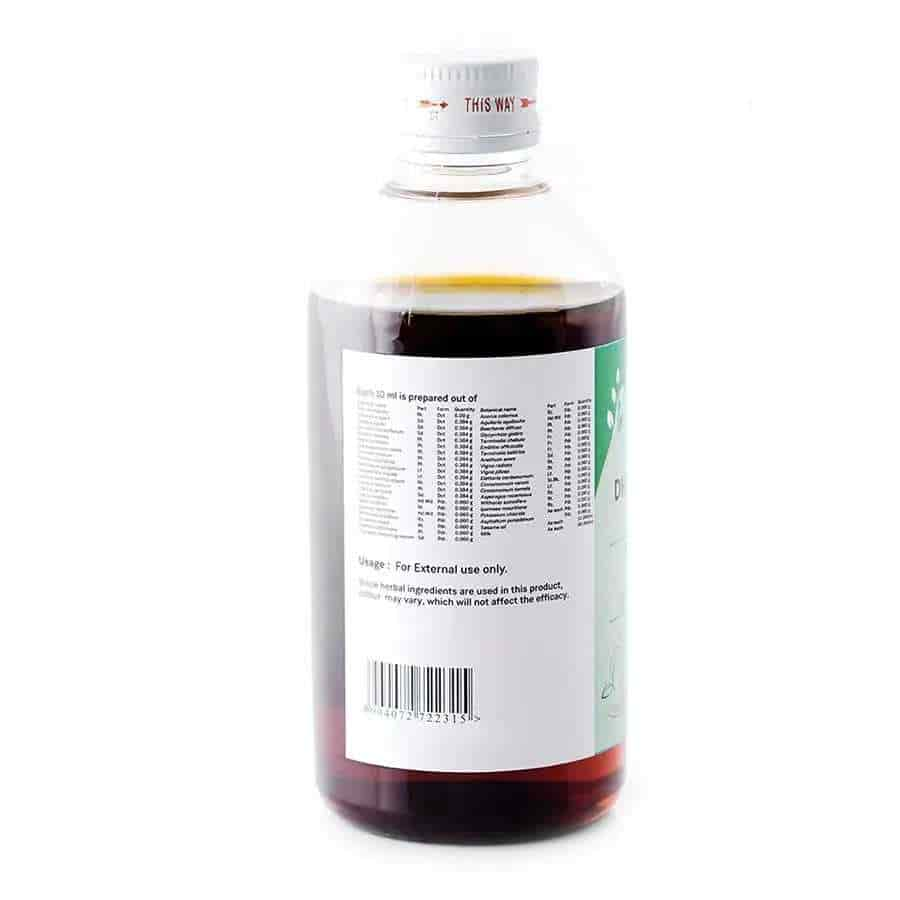


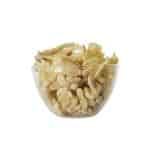
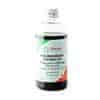
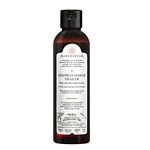
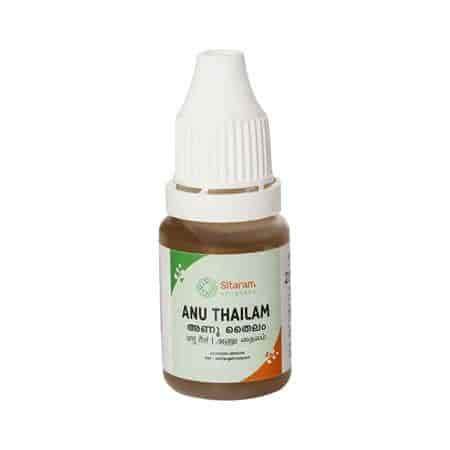

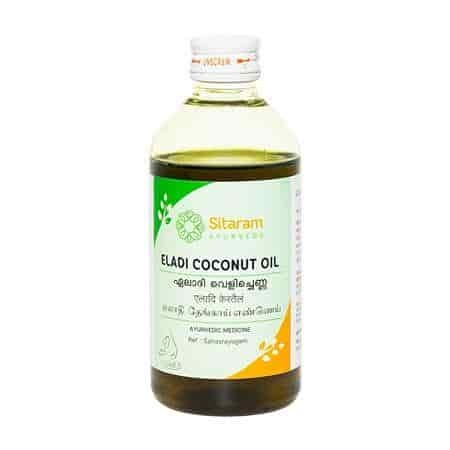
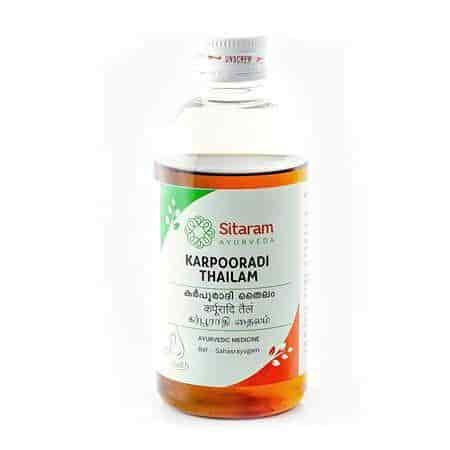
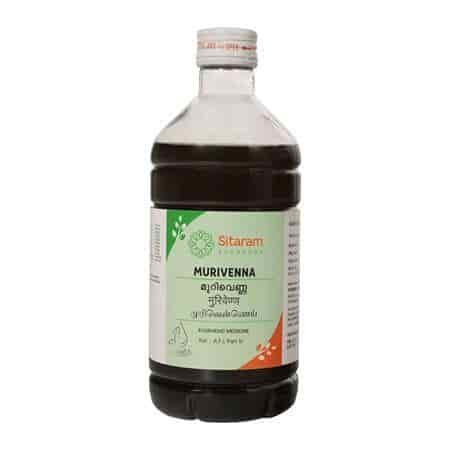
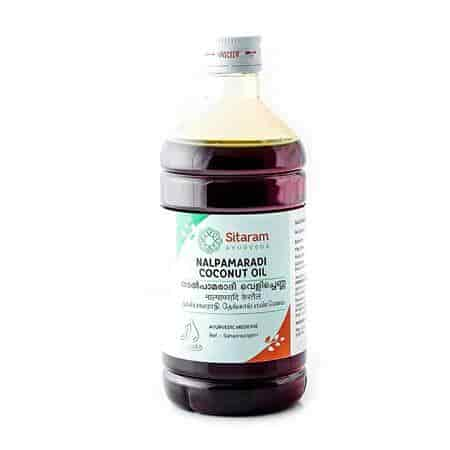
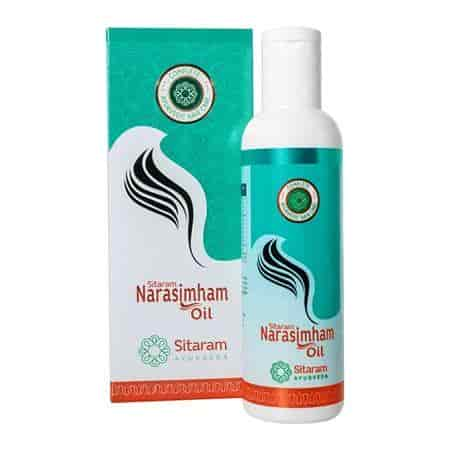

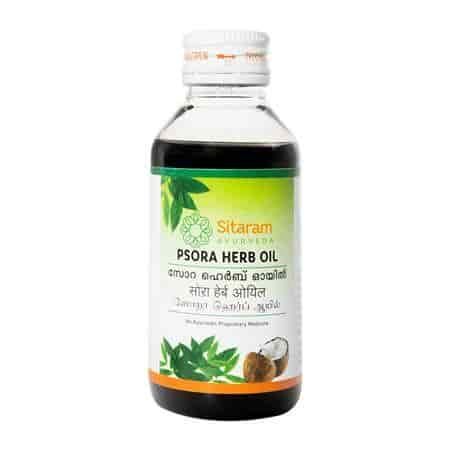
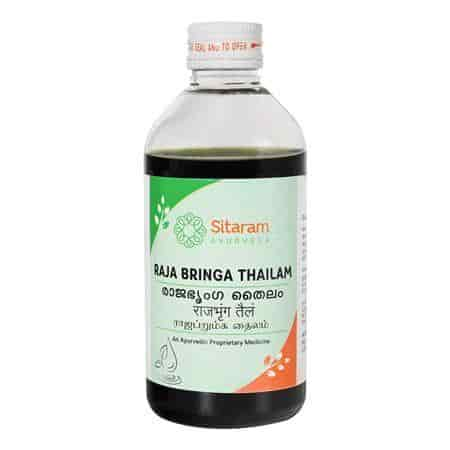
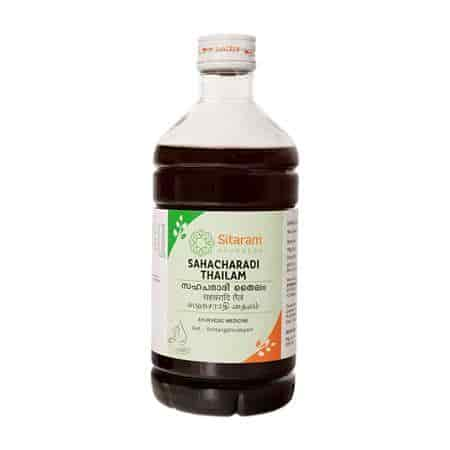
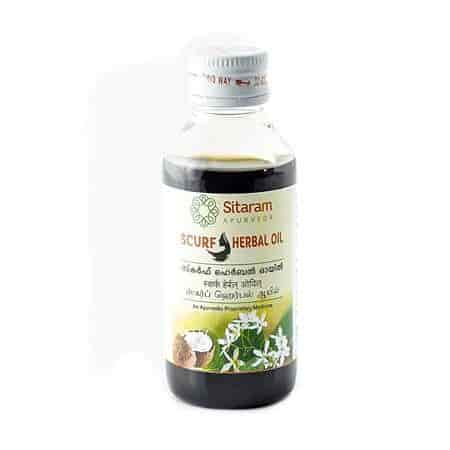
Add a review